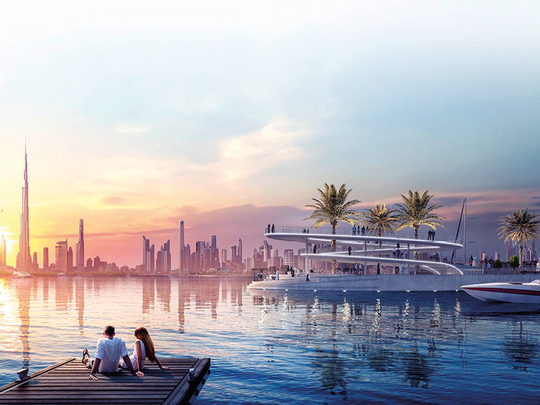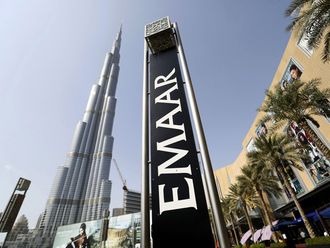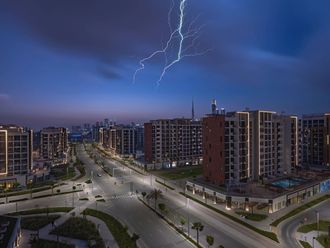
The main reason residents are attracted to master-planned communities is the holistic approach to all elements of lifestyle in such projects. According to Nathan Hones, COO and partner at Carter Associates, that means residences sprinkled with natural parks, evenly distributed leisure facilities with supporting retail and food and beverage offers, places of worship spaced appropriately for accessibility, and so on.
“Dubai is a transient city, with an expatriate workforce of 80-85 per cent of the overall population,” he Hones. “Therefore, the more attractive, enjoyable, beneficial from a wellbeing perspective developers can make their community developments, the more likely residents are to stay.”
Hones explains bigger is not necessarily better when building a master development. “It’s not that a development absolutely has to be a mega community, but it does have to engage with the resident on a number of levels -- community, family, social, economic, environmental, religious, etc. -- and mega communities typically have a multilayered, master-planned solution, which brings all of these considerations together.”
Design aspect
Transcending the purely transient mindset of many expat residents during the founding years of the UAE in the 1970s, many people now come to Dubai attracted by its lifestyle, safety and security, as well as better job and professional development opportunities, resulting in expatriates staying in Dubai for much longer.
“Long-term residents here want to live in communities that offer economic vitality, embed smart infrastructure, promote environmental sustainability and the exchange of cultures, celebrate social values, encourage wellness and engage the community,” says Aarathi Muralidharan, senior urban designer at Perkins+Will. “A vital feature of a mega community project is that it has all the amenities that residents want and need for them to be able to live, work and play within that community.”
A mega community should not be solely defined by its size, Muralidharan says, but “there must be enough within the community for it to be self-sufficient”.
She adds that the framework of mega community projects should be based on urban resiliency and cultural fit. “Ideally, these community developments will offer a mixture of buildings. They don’t have to be only villas or only high-rise apartment buildings,” says Muralidharan. “They should provide both. There should also be a mix of buildings to fit multiple price ranges, residential and commercial. These communities will offer options across different economic and social classes and will appeal to diverse cultures.”
Citing a UN report, Muralidharan says 60 per cent of all urban dwellers will be under the age of 18 by 2030 -- an important consideration in the design of master developments. “The challenge for designers and developers is to collaborate not only to create a balance between market trends and place making, but also to design mega communities that foster urban childhoods and create stimulating and playful spaces, learning environments and fantastic education facilities.”
Moreover, communities are becoming more compact and dense, creating opportunities for people to live, work and play all within walking distance. “By removing the need to spend hours commuting to and from work, people have more time for community interaction and healthy living,” says Muralidharan.
Here are some of the UAE’s upcoming master developments and how they satisfy the evolving needs of the country’s multicultural inhabitants.
Dubai Creek Harbour
Located along the historic Dubai Creek, Dubai Creek Harbour will be home to more 200,000 people once completed. The master development will also feature tourism, retail and hospitality developments in the various sub-communities. Dubai Creek Harbour will welcome its first residents early next year in Creek Island Dubai, a six-tower residential development with apartments.
“The project will include exceptional residential towers, a vibrant new precinct that ushers in the future of retail -- Dubai Square,” developer Emaar said in a statement, referring to a recently announced 2.6-million-sq-m retail, hospitality and entertainment district in Dubai Creek that will obliterate existing global records in retail development in terms of gross leasable area and total size.
The master development will also have a yacht club along with parks, green spaces and promenades in a nod to Dubai’s commitment to build “happy communities” for residents. Emaar further describes Creek Harbour as an “ideal family and tourist destination” with world-class hotels, schools, hospitals and recreational facilities.
Another fascinating feature of the development is the Dubai Creek Tower, which is set to redefine Dubai’s skyline as the emirate’s next tallest tower, featuring multiple cutting-edge observation decks with 360-degree views.
Tilal Al Ghaf
According to Hawazen Esber, CEO of Majid Al Futtaim -- Communities, the project’s developer, Tilal Al Ghaf is community development that will offer an “unrivalled recreational amenities” to its residents. It is a big claim, but with a 70,000-sq-m swimmable lagoon, complete with white sandy beaches, as well as landscaped parks, public spaces and walking and cycling paths, Esber believes the project is loaded with the kind of amenities residents can truly aspire for.
Esber adds that there will also be a resort-style mixed-use precinct set on the shore of the lagoon that will host an eclectic mix of shopping and dining options.
Residents of the community can avail of an exclusive membership programme that will give access to premium amenities, including a community club with a range of fitness and well-being facilities, social areas and special-interest activities such as art, cooking classes and other personal development workshops.
Sustainability will also be a core element in the development. “The community will set new benchmarks for lifestyle and sustainability in the market, with extensive green spaces, and will be the first project of its type to achieve BREEAM ‘very good’ sustainability accreditation,” says Esber.
Makers District
An 18-hectare mixed-use development on Reem Island in Abu Dhabi, Makers District is a lifestyle-themed community that is designed to enhance social interaction and collaboration, nurturing a dynamic and engaging environment for both residents and visitors.
“Makers District will be the very first hub for creatives and home to start-ups as well as established companies, entrepreneurs and thought leaders, artists, makers and creators,” explains Walid El Hindi, CEO of Imkan Properties, the project’s developer.
Eyed to be a new haven for creative professionals in the UAE capital, Makers District will comprise three phases, all to be completed in 2024. Under the first phase, two key developments are set to take shape. “First is the Artery, a multiuse, versatile space that can be transformed to host diverse events, and will be home to pop-up retail units and makers’ workshops,” explains El Hindi. “Another is Pixel, poised to become a dynamic and self-contained urban neighbourhood, featuring seven towers comprising apartments, co-working office spaces, as well as food and beverage and retail elements.”
Explaining the master development’s design approach, El Hindi adds: “We believe in building the negative space before the positive; which is why we design a community’s public realm before we start designing a development’s buildings. As part of this priority, 80,000 sq m of public landscaping will feature beaches, a saltwater pool, waterfront promenades and other water features that enhance the spirit of well-being.”
Set to include 3,700 residential units accommodating some 8,000 residents, Makers District will be entirely walkable and accessible, says El Hindi. “Resident and visitor happiness are at the core of the community’s master plan, with the optimal use of green spaces, public event plazas, activity lawns and gardens that will foster an amazing community spirit and encourage interaction.”












